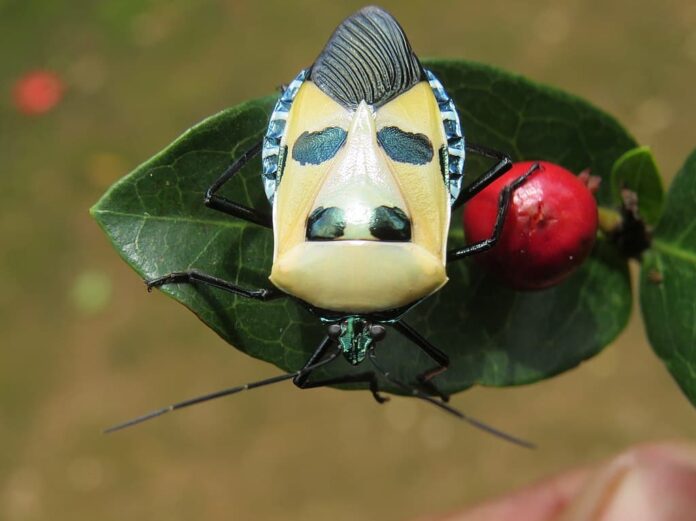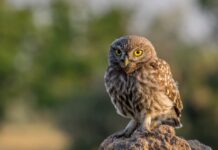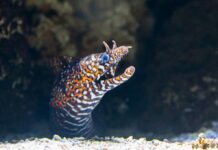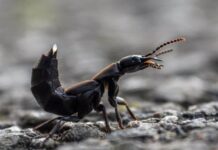What comes to your mind when you think of weird bugs? Could it be their appearance? Or could it be their behavior or size? Let your imagination run wild before you see these 12 weird bugs that will absolutely get you to question Mother Nature. Some of them wouldn’t surprise you as much but there are also some others whose appearance is extremely peculiar. Let’s take a look and see what they are with me below.
1Ant-Mimicking Spider
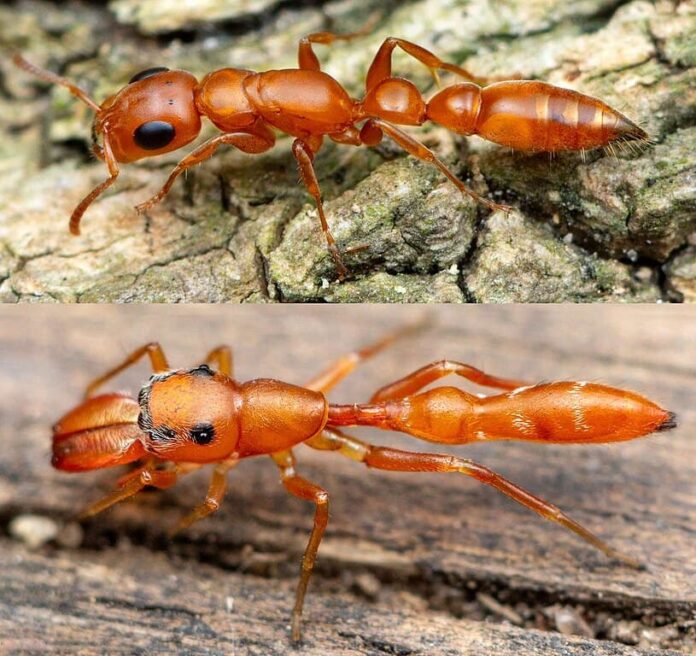
When it comes to weird bugs, ant-mimicking spiders are definitely the strange ones on the list. There are several types of ant-mimicking spiders that mimic different other bugs to survive. Some mimic to hunt easier while some mimic to avoid being hunted. You shall see some of the most common ones such as:
- Ant-Mimicking Crab Spider: It mimics ants of the genus Cephalotes which are its most favorite prey. This ant carries the dead husks of ants aloft to camouflage or hide its identity for an easier approach to prey. A crab spider is aggressive towards prey, and it jumps on a lone unsuspecting ant and bites it. Then it moves the victim somewhere safe waiting for the venom to take effect before consuming the prey.
- Glossy Ant Spider: While the closed-up photo does not show much of a similarity, this ant-mimicking spider still does a good job. It has a very slender body, and it moves very fast and abruptly just like a real ant.
- Red Weaver Ant Mimicking Jumper: It is a jumper spider with a very similar appearance to the weaver ants. This spider has 3 body segments and 6 legs, and even constrictions on the cephalothorax and abdomen. A red weaver ant-mimicking jumper mimics weaver ants but avoids making contact with ants. They only mimic the ants so that they can stay close to them for protection from predators. At the same time, it also steals from the ant brood when the opportunity arises. In case the two meet, the spider will always manage to avoid being attacked by the ant.
2Common Ghost Mantis
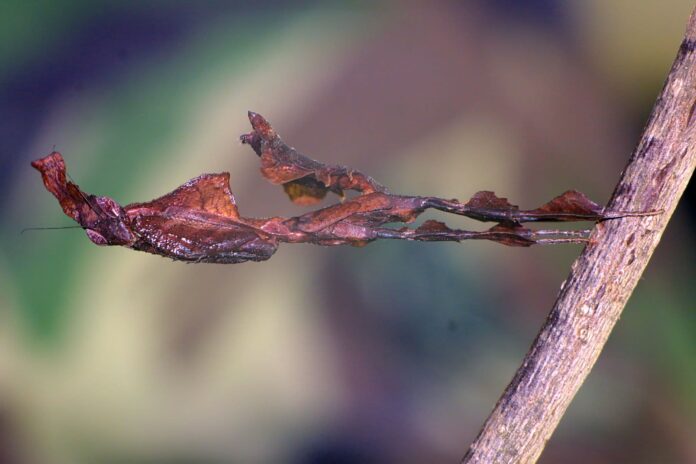
We all know the regular praying mantis, but ghost mantis is clearly on another level of mantis. As you can probably already tell, the most interesting thing about this mantis species is its unique appearance. It is a small mantis with a leaf-like body along with an elongated head, and a flattened extended prothorax. The special part is that its head has a symmetrical cone or crest that distorts its body outline to look more like a leaf. Both the limbs and wings also look like leaves, and noticing one is not easy even for birds. The mantis comes in various brownish shades from very dark brown to greenish-gray. The combination of appearance and color allows this mantis to camouflage with dead leaves very easily.
Common ghost mantises are from Africa, inhabiting bushes, dry areas, rainforests, shrubs, and trees in the open. It is a sit-and-wait type of predator that relies entirely on camouflage until an unsuspecting prey comes along. The moment the poor victim walks past, the mantis firmly grabs it with its claws. Their common meals are flies but other small insects such as beetles and moths are also good. When threatened, adult females and big nymphs will play dead while adult males run or fly away. Some of their main predators are birds, reptiles, small mammals, and spiders. Due to their unique appearance and easy maintenance, ghost mantises are a very popular species in captivity.
3Daring Owl-Butterfly Caterpillar
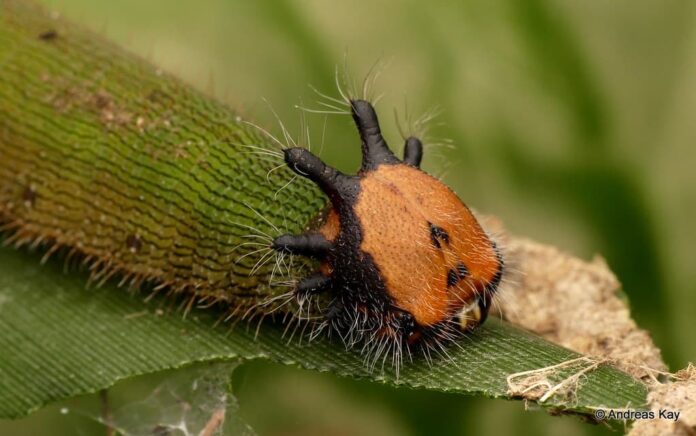
You gotta give it to the daring owl-butterfly caterpillars when it comes to weird bugs, because what on earth is that? The unusual appearance begins right from the early instar, you won’t find something that looks like that anywhere else. A caterpillar reaches 15 centimeters, and it has weird horns on its head while the small tail is forked. At a glance, it looks like a large slug with black spikes on its spine. Once it becomes a chrysalis, its appearance mimics the head of a snake instead. It even has fake eyes, scales, and mouth that make it look even more like a snake when it moves. Daring owl-butterfly caterpillars feed on banana trees and sugar cane, and they are considered pests around plantations.
4Dobsonfly
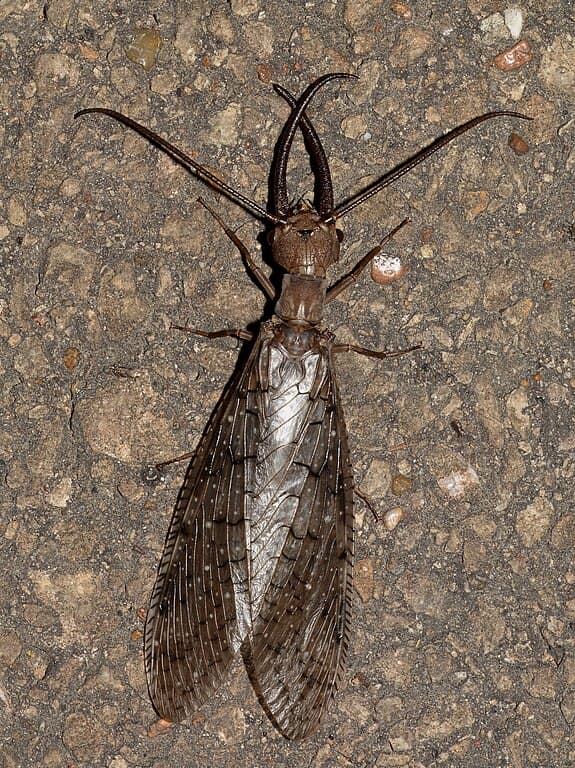
A dobsonfly is a large insect with a wingspan of up to 18 centimeters to 21.6 centimeters, making it the world’s largest aquatic insect. The large wings are grayish to translucent but they are quite useless because these flies are weak fluttery fliers. As for the body, it is only around 7.5 centimeters and the color is from yellow to dark shades of brown. The strange part is that a male’s mandibles are too long so it is only useful during courtship. Even the way that the mandibles grow when they are long is also weird so biting is not a possibility. However, females have shorter and heavily sclerotized mandibles that can deliver powerful bites.
As one of the weird bugs, the most weird-looking form is during their larval stage, hellgrammite. The hellgrammites are light brown, and their bodies are covered by dark brown microspines that make them look ever darker. On top of that, they have both tracheal gills and spiracles that allow them to breathe both in and out of water. They look like centipedes but a bit scarier. When they reach the pupae stage, they become yellow-orange in color with darker splotches on the abdomen dorsum. Still looks very freaky regardless.
Dobsonfly is an aquatic bug that lives in rocky bottoms of streams across Asia, the Americas, and South Africa. Only larvae eat, and they mostly feed on young aquatic insects such as caddisflies, chironomid midges, mayflies, and stoneflies. But these hellgrammites are very aggressive predators so they attack other aquatic insects and organisms in the water.
5Indian Domino Cockroach
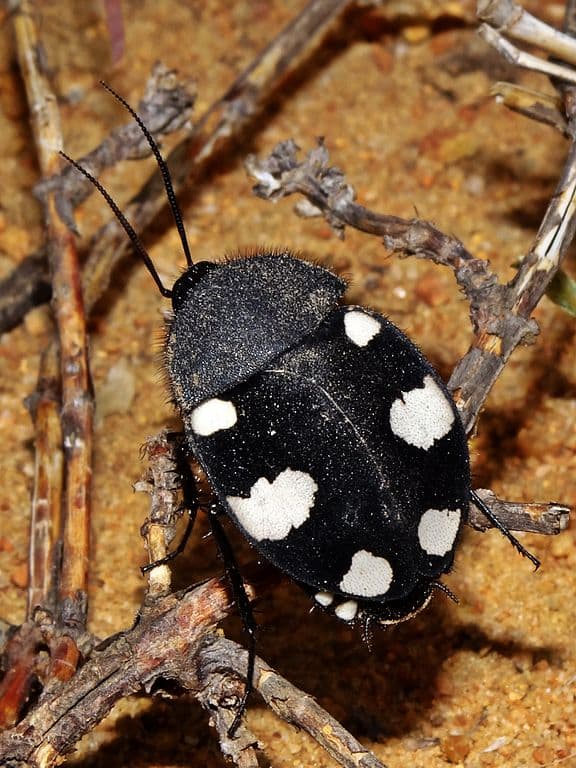
A majority of us are not a fan of cockroaches in our homes, but here is the living proof that cockroaches can be cute. An Indian domino cockroach aka desert cockroach or seven-spotted cockroach is a cockroach species from India. This cockroach grows to around 3 centimeters, and it has a black body with 7 white spots. While looking like an emo ladybug, the appearance has its purpose. It evolves to mimic the six-spot ground beetles which are aggressive bugs with strong defenses like strong bites and the ability to spray chemical irritants. With this appearance, this cockroach can survive better in the wild.
Indian domino cockroaches inhabit scrub forests in India where they burrow under leaves and soil to avoid heat during the day. They are crepuscular so they are most active around dusk and dawn. Similar to regular cockroaches, they also feed on decaying organic matter of both animal and vegetable based. Being a uniquely pretty cockroach, domino cockroaches are actually popular as pets because they are also easy to keep. And if you are interested in having one, you can find these cute cockroaches online.
6Jewel Caterpillar
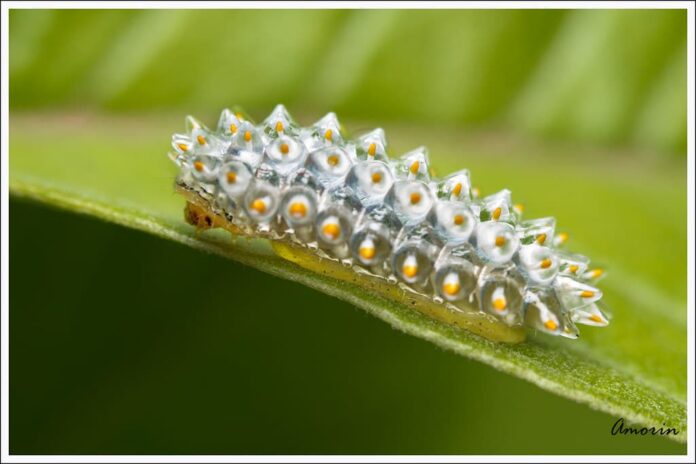
The name definitely does justice to the jewel caterpillars, a strange beauty that you don’t come across often. A jewel caterpillar is around 2.5 centimeters long, and it has a colorful bead-like gelatinous mass that covers the exoskeleton. Depending on the species, the tips of the transparent beads can be green, orange, red, or yellow. These glutinous cones serve as protection if a predator tries to grab the caterpillar. The cones will break off upon contact while the stickiness of the cones shield them from smaller predators like ants. They are native to Costa Rica, Mexico, and several Caribbean Islands.
7Lobster Moth Caterpillar
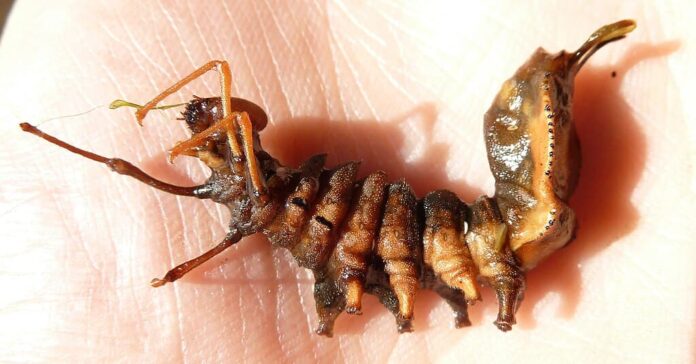
A lobster moth caterpillar has a large head, long thoracic legs, and raised humps on its fourth to seventh segments. It is 7 centimeters long, and the top part of the body looks very similar to a lobster, especially its head. It is reddish brown in color which helps with camouflage when it is in a resting position. During the first instar of the lobster moth, its caterpillar feeds on its own eggshell while guarding it. And if there is another caterpillar comes close to the shell, it will vigorously attack the stranger. Another weird thing is that it mimics an ant or a small spider due to its unusually long thoracic legs. If it is disturbed, it violently wiggles just like an injured ant does.
8Man-Faced Stink Bug
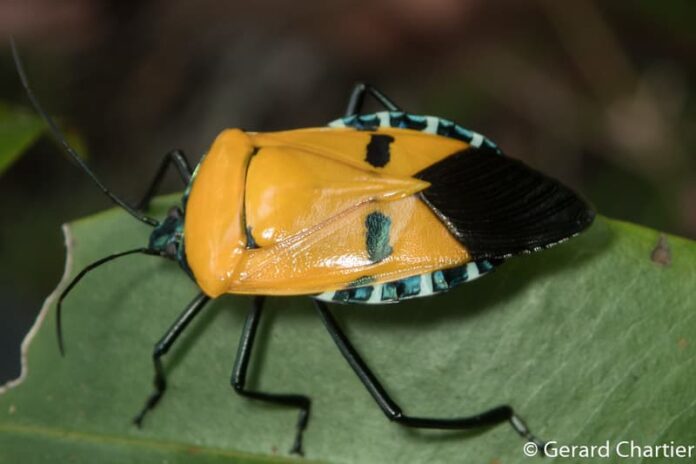
Stink bugs are notorious for their stinky smell but this species is known because it has a face on its body. Some people said it has a face and even hairdo like Elvis Presley while others said it looks like Hitler. Man-faced stink bugs usually come in 4 different colors including cream, orange, red, or yellow. These bright colors are to warn predators that these weird bugs are poisonous to consume. The similarities that they share are the large black spots on the body with dark patches at the tips of its forewings. Man-faced stink bugs are pests in some areas when there are so many of them they become an infestation. Both nymphs and adults do the damage by sucking the sap of young shoots, damaging leaves, and causing fruits to rot.
9Rainbow Grasshopper
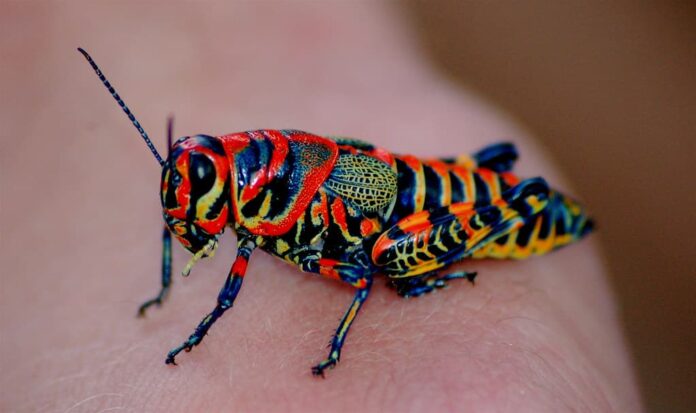
I wouldn’t say it is strange-looking but it is still one of the weird bugs due to its unusual coloration. A male rainbow grasshopper is around 2 centimeters while a female is up to 3.5 centimeters big. The base color is black but there are reddish and yellowish stripes with blue markings that look like a nice paint job. Their colorations are different in each species across their ranges but they are all beautiful. One species is black with little red, one has distinct red markings, while another has a purplish or violet sheen. It is also common to come across the ones with black, reddish-orange, white, and yellow markings all in one.
Rainbow grasshoppers are native to Canada, Northern Mexico, and the United States living in alfalfa fields, desert grasslands, short prairies, and thinly vegetated areas. These grasshoppers do not have wings so they cannot fly, and they hunt on the ground. Rainbow grasshoppers are polyphagous, meaning they feed on a wide variety of meals. Some of the most common ones are grasses and low-growing forbs, and they do not feed on crops like other grasshoppers. The rainbow grasshoppers are solitary so they do not cause an infestation and they are not pests either. In case you see one, just leave it alone because it poses no harm.
10Scorpion-Tailed Spider
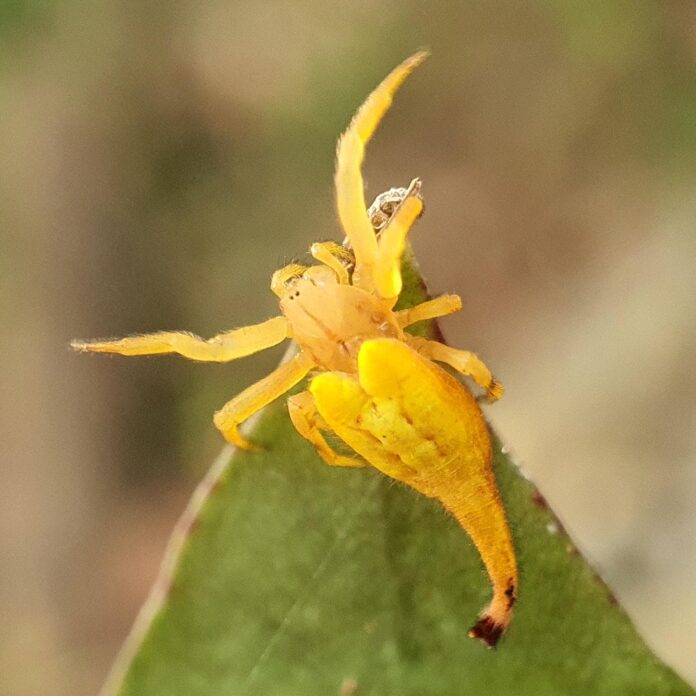
Probably one of the truest definitions of weird bugs, scorpion-tailed spiders are out of this world. Males are only 0.2 centimeters while females can grow up to 1 to 3 centimeters long. A scorpion-tailed spider is light cream to brown or yellow and sometimes black in color which helps it to camouflage. At a glance, this spider looks like plant litter such as dead leaves, fallen flowers, or twigs. Apart from the difference in size, the appearance is also another factor. The long strange tail that you see is only possessed by females, and it curls up when disturbed. She will raise her tail above her head to scare the predator away though she cannot sting. Scorpion-tailed spiders are docile and the bites are not common but biting can result in local pain and swelling.
These little weirdos have a distribution across Australasia, Eastern Asia, and Southern Asia, and one species is from Africa. They live in bushland and urban gardens where they build an orb web that is 1 to 2 meters from the ground. The web traps small flying insects, but the main purpose is to hang female’s egg sacs.
11Spiny Devil Katydid
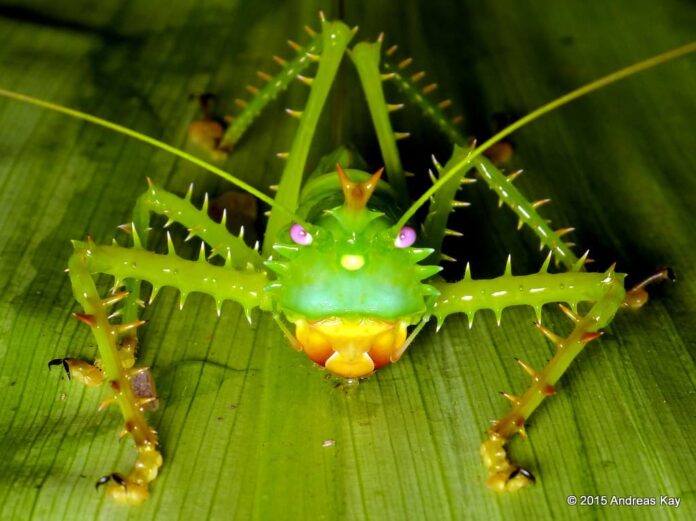
A list of weird bugs is incomplete with the appearance of the spiny devil katydid here. The longer you look at it, the stranger it gets because it is both cute and freaky. Its total length is around 2.5 to 7 centimeters, and females have an ovipositor that is around 6.5 centimeters. This katydid species is green, and this coloration helps them camouflage among leaves perfectly. The spiny devil katydids have a horn-like projection on the top of their head that looks like a mini dragon. And as you can see, their 6 legs are very spiny and those spines help them to defend themselves. Along with that, their legs also help them trap prey as well.
Spiny devil katydids are residents of South America, living in forests where they feed on both insects and vegetation. They have extremely powerful jaws that allow them to feed on forest fruits and seeds. These jaws can also break human skin if a spiny devil katydid decides to bite though it is rare.
12Wind Scorpion
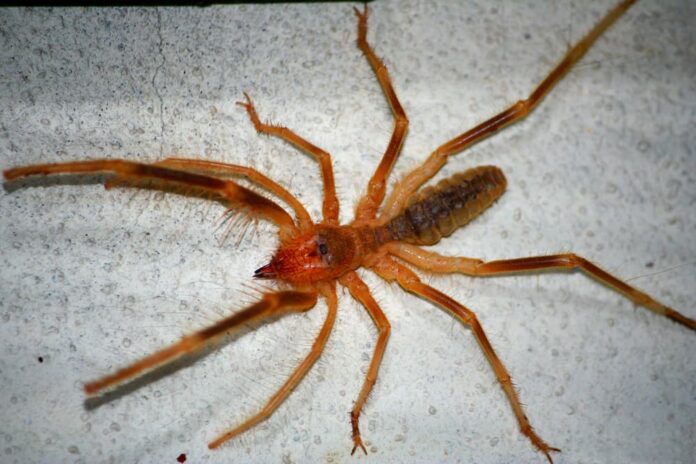
This is more like a nightmare than weird bugs but still, definitely not something you want to come across. Let’s clear the first doubt, no it is not a scorpion and it is not a spider either. A wind scorpion is an arthropod of Solifugae species, growing to a size of 12 to 15 centimeters including legs. The body is round and hairy with front appendages that resemble those of a scorpion; hence the last name. It has huge chelicerae that are often around 25% of its body length that it uses for hunting. These chelicerae are like scissors that can pierce and crush prey. Depending on the species, some have very large central eyes that are very useful in avoiding enemies and hunting.
Wind scorpions live in dry climate areas of desert biomes as well as scrub and semidesert. They are the famous camel spiders with the reputation of feeding on human faces at night in the desert. That is not true either. These little bugs do not feed on a meal that big so their meals are ground-dwelling arthropods and small animals. Some species are carnivorous while others are omnivorous but they usually feed on darkling beetles, termites, and more. Wind scorpions hunt with their arms because they do not have venom glands like most spiders. Though they do not attack humans, their chelicerae can penetrate human skin to deliver painful bites so you should leave them alone. They avoid humans anyway and they quickly move and run like the wind when disturbed; hence the first name.
Related Post: Weird-Looking Monkeys

